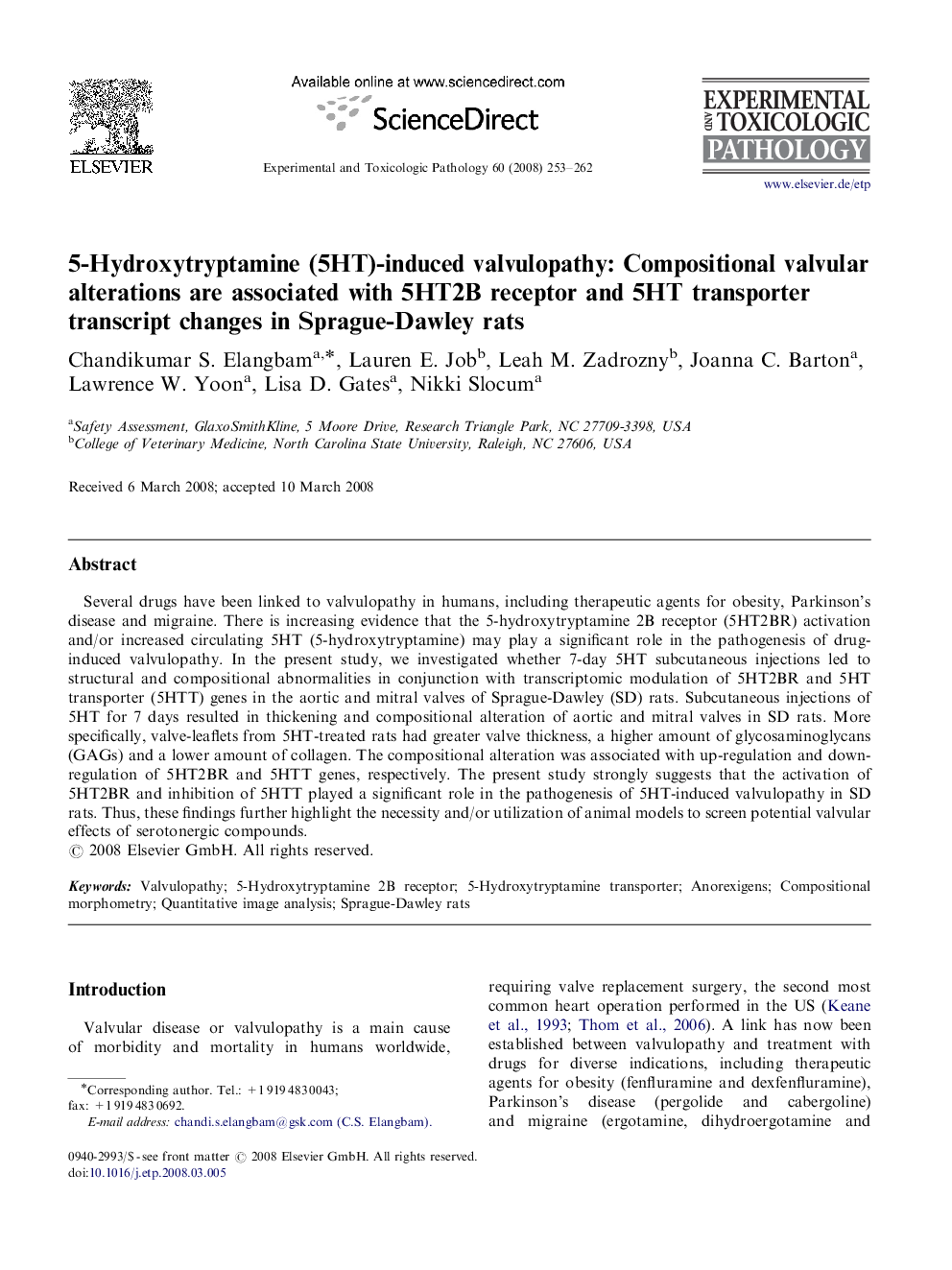| Article ID | Journal | Published Year | Pages | File Type |
|---|---|---|---|---|
| 2499848 | Experimental and Toxicologic Pathology | 2008 | 10 Pages |
Several drugs have been linked to valvulopathy in humans, including therapeutic agents for obesity, Parkinson's disease and migraine. There is increasing evidence that the 5-hydroxytryptamine 2B receptor (5HT2BR) activation and/or increased circulating 5HT (5-hydroxytryptamine) may play a significant role in the pathogenesis of drug-induced valvulopathy. In the present study, we investigated whether 7-day 5HT subcutaneous injections led to structural and compositional abnormalities in conjunction with transcriptomic modulation of 5HT2BR and 5HT transporter (5HTT) genes in the aortic and mitral valves of Sprague-Dawley (SD) rats. Subcutaneous injections of 5HT for 7 days resulted in thickening and compositional alteration of aortic and mitral valves in SD rats. More specifically, valve-leaflets from 5HT-treated rats had greater valve thickness, a higher amount of glycosaminoglycans (GAGs) and a lower amount of collagen. The compositional alteration was associated with up-regulation and down-regulation of 5HT2BR and 5HTT genes, respectively. The present study strongly suggests that the activation of 5HT2BR and inhibition of 5HTT played a significant role in the pathogenesis of 5HT-induced valvulopathy in SD rats. Thus, these findings further highlight the necessity and/or utilization of animal models to screen potential valvular effects of serotonergic compounds.
